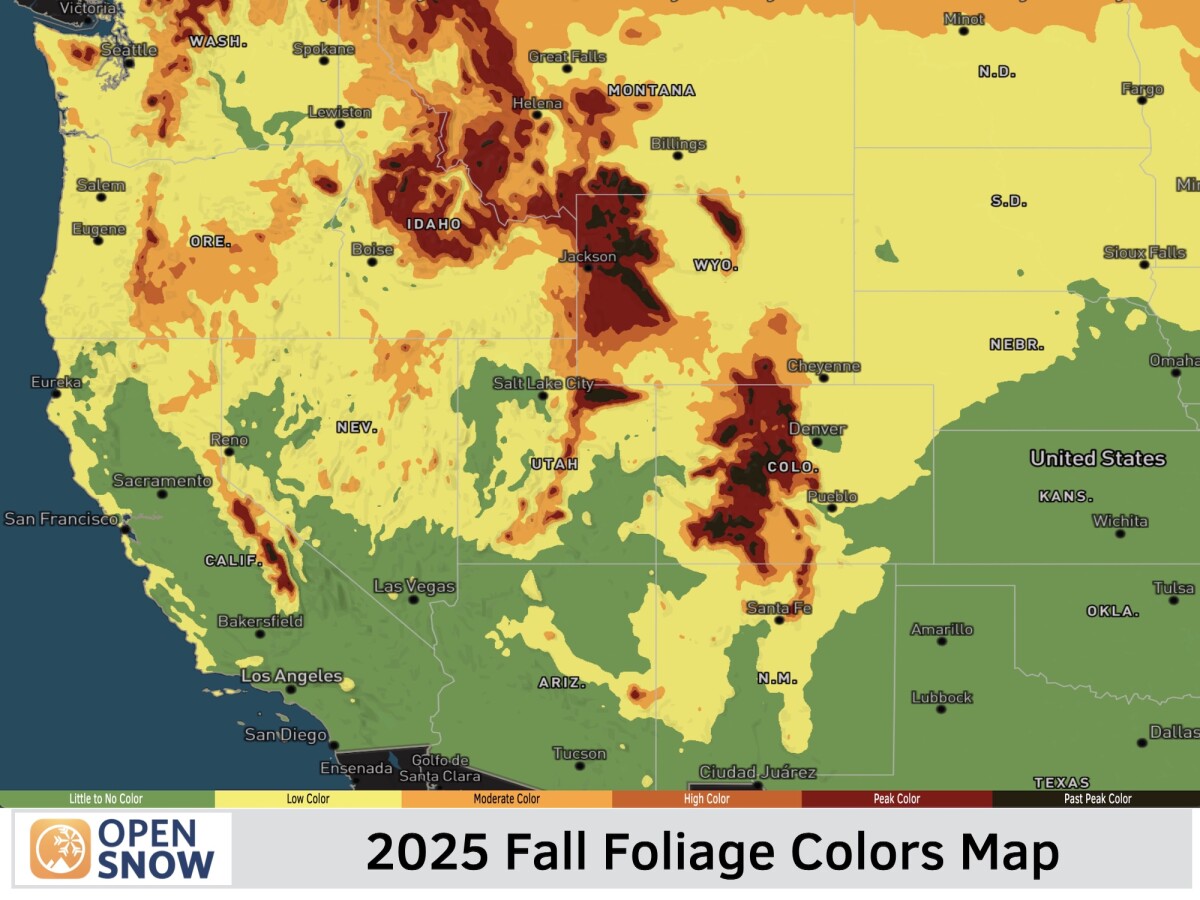Western US Daily Snow

By Alan Smith, Meteorologist Posted 2 years ago July 17, 2023
Hot And Dry Start To The Week
Summary
Temperatures will remain very hot across much of the West early this week, while a trough moving across the Northwest will result in gusty winds and elevated fire danger. The North American Monsoon is slowly getting going with a chance of dry thunderstorms from the Sierra to Northern Rockies on Mon, followed by scattered t-storms (mix of wet & dry t-storms) for the Central Rockies mid-week.
Short Term Forecast
Big Picture:
A strong ridge of high pressure remains centered over the Southwest U.S. early this week, which was responsible for record to near-record heat this past weekend.
Meanwhile, a trough of low pressure is moving across the Northwest & Northern Rockies, resulting in gusty winds and increased fire danger. More numerous thunderstorms can be expected with this feature north of the Canadian border with wetting rains potentially offering some fire/smoke relief.
Further south, a little bit of monsoonal moisture is sneaking into the Western U.S. and winds associated with the trough to the north will bring just enough of this moisture into the Great Basin/Northern Rockies to result in a threat of dry thunderstorms with little to no rain.

Fire and Smoke Outlook:
Fires continue to burn across Western Canada, but good rainfall potential with thunderstorms along with cooler temperatures on Monday may offer some relief (provided that lightning doesn't trigger any new large fires). Downwind of these fires, smoke is impacting areas along the east side of the Continental Divide in Montana.
In the Western U.S., we're starting to see a few fires pop up now that a hot and dry pattern has taken hold. The most notable fire at the moment is the Flat Fire in Southwest Oregon, which is sending smoke into Northern California, and to some extent the Northern Rockies.

Forecast for Monday Afternoon/Monday Night:
Monsoonal moisture is sneaking into the Western U.S. but dry air in the low levels will limit rainfall potential. As a result, we will only see some dry thunderstorms across parts of the Southwest, Sierra Nevada Range, Great Basin, and Northern Rockies. This means that storms will produce little to no rain, but could produce strong wind gusts in addition to cloud-to-ground lightning.
Further north, more widespread thunderstorms with wetting rains can be expected across BC and Alberta with light/moderate showers for the Washington Cascades. While rainfall will be hit-or-miss in nature, there should be some heavy downpours which may help with the fire situation in BC if the rain falls in the right spots.

Forecast for Tuesday:
Monsoonal moisture will become more concentrated across the West Central U.S. from the Sierra Nevada Range into the Central Rockies, extending to near the Continental Divide in Colorado. Overall, moisture levels will increase a bit with scattered thunderstorms expected along this corridor, with a mix of wet and dry thunderstorms anticipated.

Forecast for Wednesday:
A similar pattern will remain in place with a slight eastward shift in moisture overall. The main effects will be a trend to more isolated thunderstorms across the Sierra compared to Tuesday, while Utah and Colorado will see more numerous thunderstorms.

Forecast for Thursday to Friday:
A shortwave will move across the Central/Northern Rockies on Thursday with scattered thunderstorms expected west of the Divide in Colorado, Wyoming, Idaho, and SW Montana.
Meanwhile, a cold front will slide down the east side of the Divide with deeper moisture reaching the eastern slopes of the Divide in Wyoming and Colorado behind the front where more numerous thunderstorms can be expected along with the potential for heavy rain.
Thunderstorm chances and coverage should decrease a bit on Friday with the best potential remaining near and east of the Divide in Wyoming, Colorado, and Northern New Mexico.

Extended Forecast
Outlook for Saturday (July 22) to Thursday (July 27):
High pressure will remain in control across the Western U.S. during this period while monsoonal moisture will continue to rotate around the high pressure center, resulting in frequent thunderstorm chances across the Four Corners states.
The monsoon does not look particularly strong heading into next week and heavy rain potential will be limited, but an uptick in thunderstorm activity across the higher elevations of Colorado, New Mexico, Arizona, and Southern Utah should still be expected.

There is a high probability of hotter-than-average temperatures across nearly the entire Western U.S. during this period. The Olympic Peninsula and Puget Sound in Washington is the one region that should escape the heat with equal chances of above or below-average temperatures expected.

Thanks so much for reading! Next update on Wednesday (July 19).
Alan Smith
Announcements
New Feature Alert: Favorite Winter & Summer Lists
About Our Forecaster




